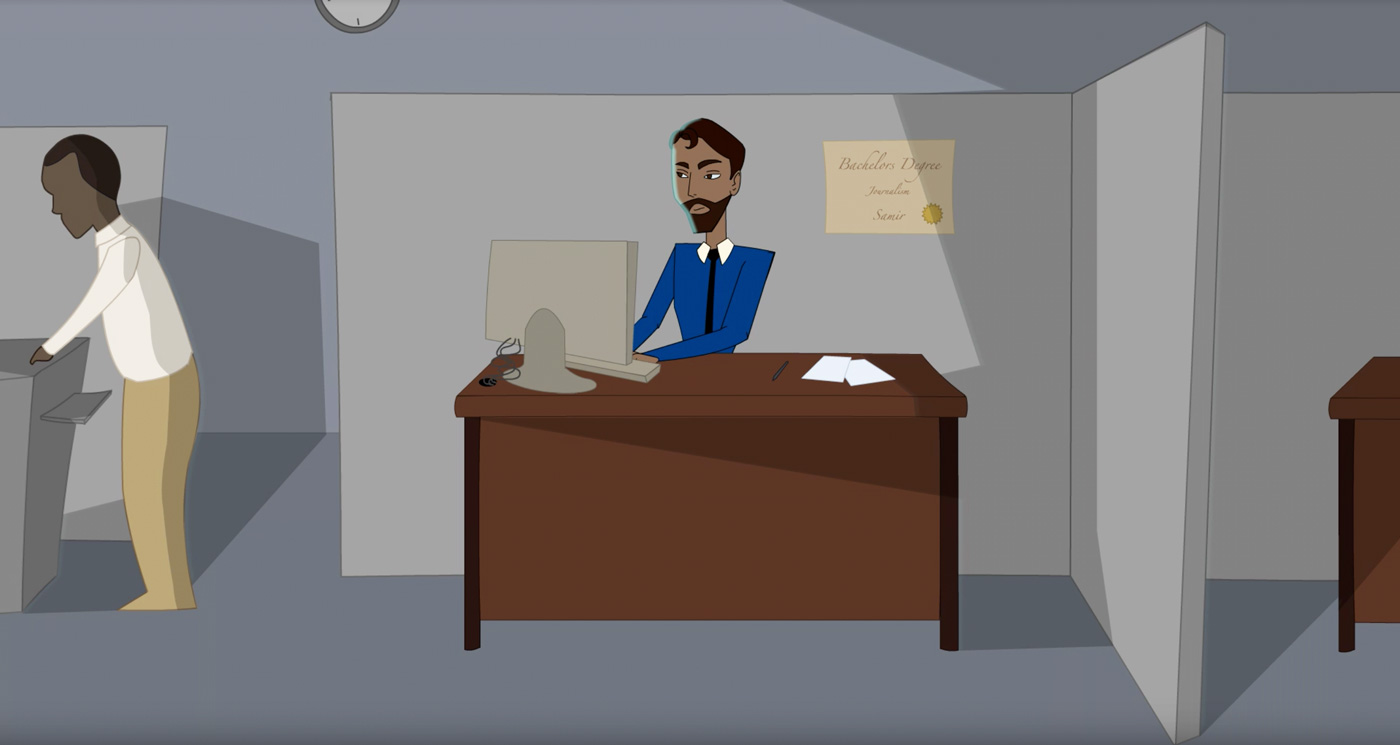A method for introducing universal design to students as they tackle any story-based writing assignment with the goal of including enough descriptive language that sight-impaired persons can visualize the scenes.
Example:
This example writing happens to be from a script for a scene in an animation created by my student as part of The EPIC Project. The visual narrative bits are in bold font.

“I’m in my cubicle, my bachelor’s degree on the wall, writing editorial opinions for my on-line newspaper, while others work around me.”
Though critical for students with sight impairments, it also benefits those that land within a spectrum of cognitive disabilities such as ADHD and dyslexia, as well as a variety of other comprehension challenges. It also aids every student that may be watching a washed-out projection in a brightly lit room or those that are simply tired near the end of the school day.
Further Reading:
Writing within the I. S.E.E. U. Framework by L.E.A.D. is a free website with more detailed examples for writing using visual narratives.
Audio Description Examples by 3Play Media. By writing in visual narratives, we can avoid having to create separate versions for sight impaired persons (the opposite of universal design).
Created by Bill Fischer
Reviewed by Louis Olander
Categorised in: (1) Perception, (2) Language, Math Expressions, Symbols, (3) Comprehension, (4) Physical Action, (7) Recruiting Interest, ACTION AND EXPRESSION, ENGAGEMENT, REPRESENTATION